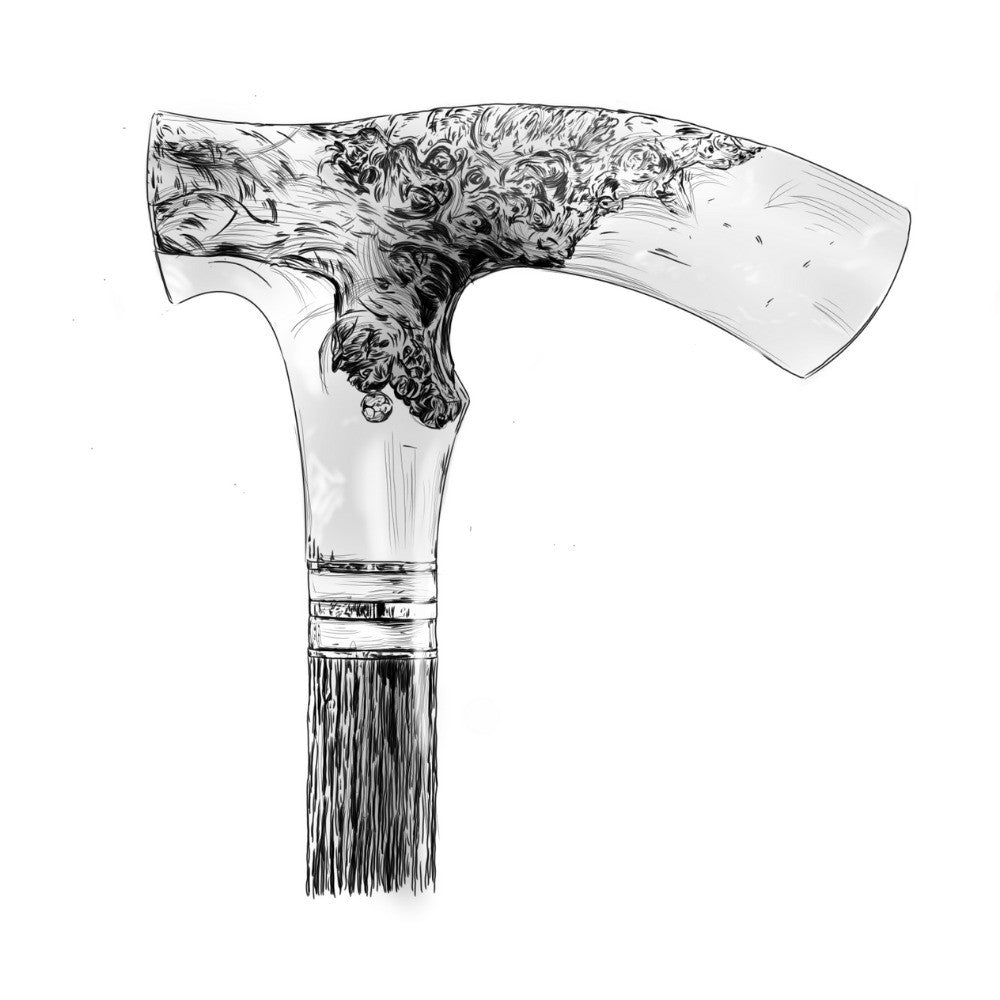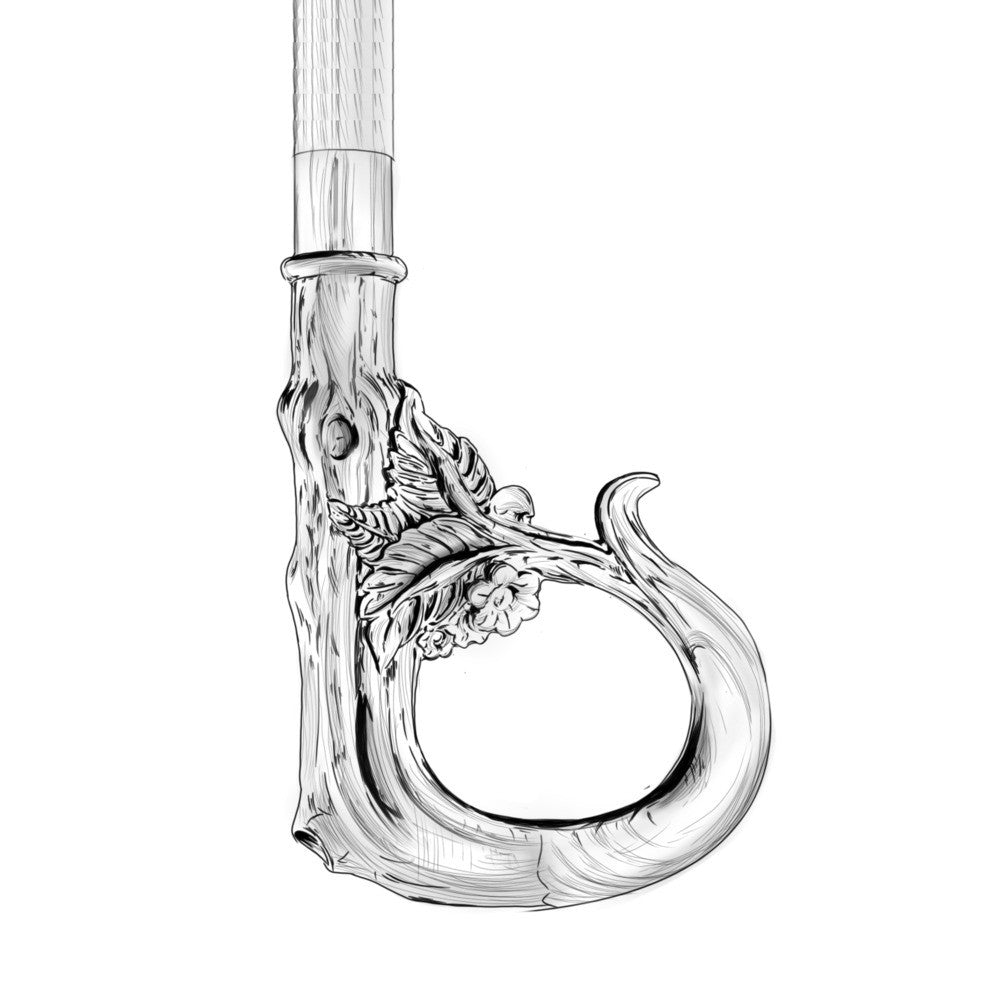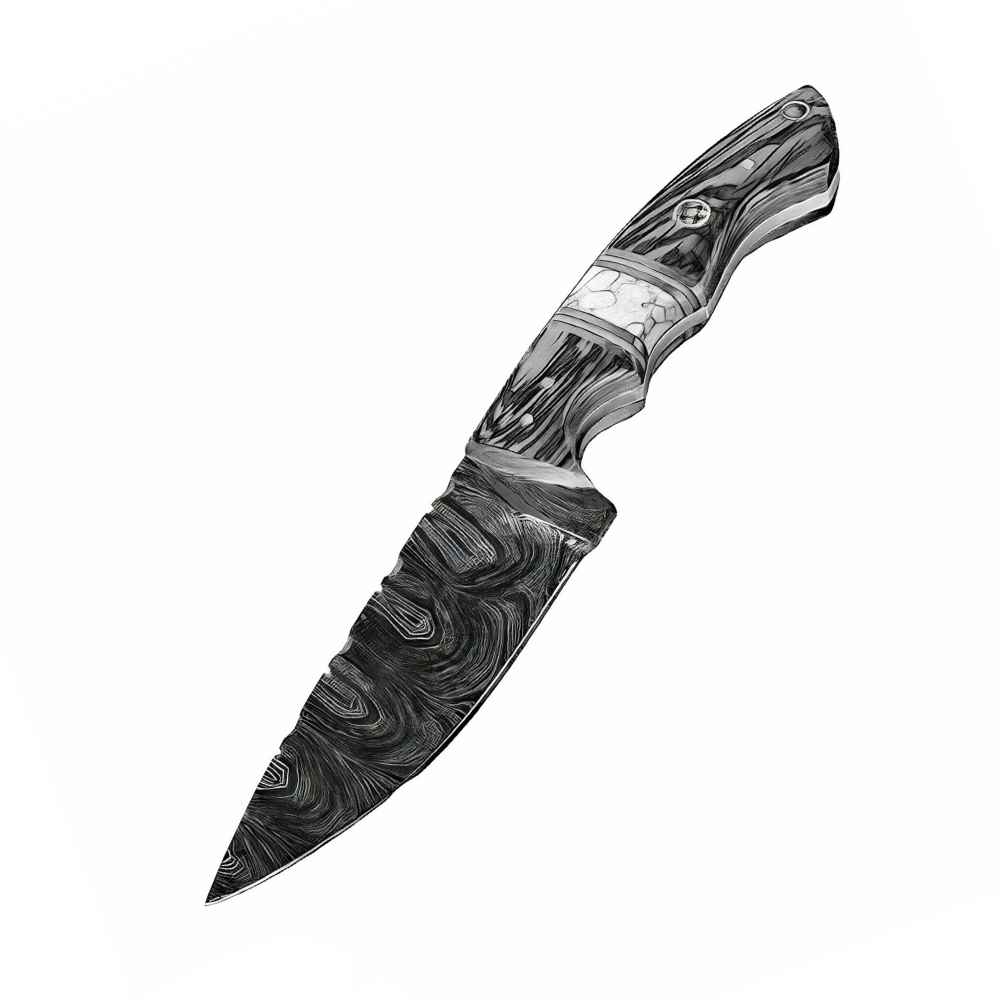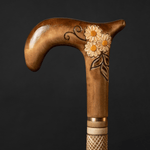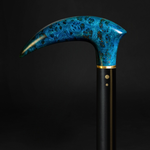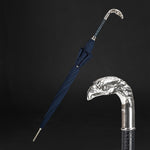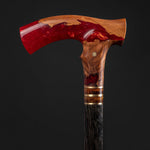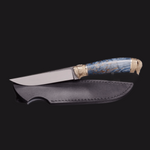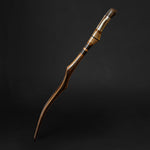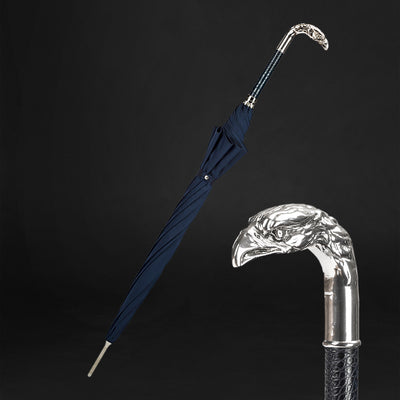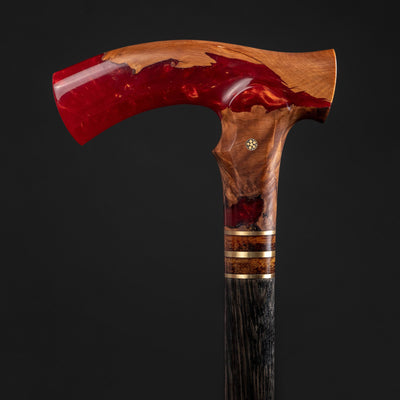You have no items in your shopping cart.
Recent Posts
-
The Art of Christmas Design: Walking Canes That Celebrate the Season in Style
-
How an Ergonomic Walking Cane Handle Prevents Hand and Wrist Strain?
-
How to Walk With a Cane Correctly to Avoid Back or Shoulder Strain?
-
5 Common Mistakes People Make When Buying a Walking Cane (and How to Avoid Them)
-
How to Choose a Walking Cane That Reflects Your Personality (Not Just Your Needs)?
-
Walking Canes That Match Formalwear for Weddings and Events
MOST POPULAR NOW
13
Apr
Arthritis is a common medical condition that affects millions of people around the world. It is a disease that affects the joints, causing inflammation, pain, and stiffness. There are many different types of arthritis, but the most common forms are osteoarthritis and rheumatoid arthritis. In this article, we will define arthritis, discuss its importance, and provide information on how to choose the best walking stick for arthritis patients.
The best walking sticks for arthritis. A comprehensive guide
Definition of arthritis
Arthritis is a medical condition that affects the joints, causing pain, inflammation, and stiffness. The most common forms of arthritis are osteoarthritis and rheumatoid arthritis. Osteoarthritis is a degenerative disease that occurs when the cartilage in the joints breaks down over time. Rheumatoid arthritis is an autoimmune disease that causes inflammation in the joints. Other types of arthritis include psoriatic arthritis, gout, and lupus.
Importance of walking sticks for arthritis patients
Walking sticks are an important tool for arthritis patients. They provide support and stability, reducing the pressure and stress on the joints. Walking sticks can also help to improve balance and prevent falls, which are a common problem for people with arthritis. In addition, walking sticks can help to reduce pain and fatigue, allowing arthritis patients to walk for longer distances.
How to choose the best walking stick for arthritis?
When choosing a walking stick for arthritis, there are several factors to consider. The first factor is the type of arthritis you have. If you have osteoarthritis, you may need a walking stick with a cushioned handle to reduce the pressure on your hands. If you have rheumatoid arthritis, you may need a walking stick with a non-slip grip to prevent slips and falls.
The second factor to consider is the length of the walking stick. The walking stick should be the right length for your height, with the handle at the level of your wrist when your arm is by your side. A walking stick that is too long or too short can cause additional strain on your joints.
The third factor to consider is the material of the walking stick. Walking sticks can be made from a variety of materials, including wood, metal, and carbon fiber. Each material has its own advantages and disadvantages, so it is important to choose a walking stick that is comfortable and easy to use.
In addition to these factors, there are several other features to consider when choosing a walking stick for arthritis. These include the weight of the walking stick, the type of tip, and any additional accessories, such as wrist straps or rubber ferrules.
In conclusion, arthritis is a common medical condition that affects millions of people around the world. Walking sticks are an important tool for arthritis patients, providing support, stability, and reducing pressure on the joints. When choosing a walking stick for arthritis, it is important to consider the type of arthritis, the length of the walking stick, the material, and other features. By choosing the right walking stick, arthritis patients can improve their mobility, reduce pain and fatigue, and prevent falls.

Types of walking sticks for arthritis
Walking sticks are an essential tool for arthritis patients as they provide stability and support while walking. There are different types of walking sticks that are suitable for different types of arthritis, based on their design and features. In this article, we will discuss the different types of walking sticks for arthritis patients.
-
Standard walking stick
The standard walking stick is a simple and traditional design that is suitable for most arthritis patients. It is a single shaft that is usually made of wood or metal with a rubber tip at the bottom to provide grip and stability. It is adjustable in height to suit the patient's requirements.
-
Quad cane
The quad cane, also known as the four-legged walking stick, is designed for patients who require more stability than what a standard walking stick can provide. It has four feet instead of one, making it more stable and providing a wider base of support. This type of walking stick is suitable for patients with severe arthritis or balance problems.
-
Offset cane
The offset cane is designed to provide more support to the wrist and hand. It has a curved handle that provides better grip and support to the wrist. This type of walking stick is suitable for patients with arthritis in their hands or wrists.
-
Forearm crutch
The forearm crutch is a walking aid that is used by patients with severe arthritis or mobility problems. It provides support to the forearm and wrist, allowing the patient to move around without putting too much strain on the affected joints. This type of walking stick is suitable for patients who need to take a lot of weight off their feet or who have limited mobility.
-
Knee scooter
A knee scooter is a type of walking aid that is used by patients who have severe arthritis or are recovering from a knee injury or surgery. It has a platform for the knee to rest on and wheels to allow the patient to move around without putting weight on the affected knee. This type of walking stick is suitable for patients who need to keep weight off their feet or have limited mobility.
In conclusion, there are different types of walking sticks for arthritis patients, and each type is designed to provide a specific level of support and stability. Patients should choose the type of walking stick that is most suitable for their specific type of arthritis and level of mobility. A healthcare professional can help patients choose the best type of walking stick for their needs.
Factors to consider when choosing a walking stick for arthritis
When choosing a walking stick for arthritis, there are several factors that you should consider to ensure that you get the best support and stability while walking. In this section, we will discuss the important factors to consider when choosing a walking stick for arthritis.
-
Stability
The first and most important factor to consider is stability. The walking stick should be stable and able to support your weight without wobbling or bending. Consider the type of arthritis you have and how much stability you need to walk safely.
-
Comfort
The walking stick should be comfortable to use, and the handle should fit well in your hand. Consider the shape and material of the handle, as well as the distance between the handle and the ground. The handle should be easy to grip and not cause any pain or discomfort.
-
Height
The walking stick should be adjustable in height to suit your specific needs. The ideal height is when the handle is at hip level when you are standing upright with your arms hanging naturally at your sides. This will provide the best support and stability while walking.
-
Weight
The weight of the walking stick is also an important factor to consider. A lightweight walking stick is easier to use and carry around, while a heavier walking stick provides more stability. Consider your level of strength and mobility when choosing the weight of your walking stick.
-
Grip
The grip of the walking stick should be secure and provide good traction. Consider the material of the grip and the design of the handle to ensure that it provides a comfortable and secure grip.
-
Durability
The walking stick should be durable and able to withstand regular use. Consider the material of the walking stick and the quality of construction to ensure that it is strong and sturdy enough to support your weight and provide the necessary stability.
In conclusion, choosing the right walking stick for arthritis requires careful consideration of several important factors. By taking into account stability, comfort, height, weight, grip, and durability, you can find the best walking stick that will provide the necessary support and stability while walking with arthritis.

Best walking sticks for arthritis
Arthritis can make it difficult to walk, especially on uneven terrain or when there are hills involved. That's where walking sticks come in. A walking stick can provide support, stability, and balance to help you get around with less pain and more confidence. But not all walking sticks are created equal, and some are better than others for people with arthritis. In this guide, we'll take a look at the best walking sticks for arthritis, and what to look for when choosing one.
-
Height adjustable walking sticks
One of the most important factors to consider when choosing a walking stick is the height. It's essential to choose a stick that's the right height for your body. If it's too short, you'll have to bend over, which can put extra strain on your back. If it's too tall, it can throw off your balance and make it harder to use. That's why height adjustable walking sticks are an excellent option for people with arthritis. They allow you to adjust the height to suit your needs, so you can find the perfect fit.
-
Folding walking sticks
If you're looking for a walking stick that's easy to store and transport, a folding walking stick is a great choice. They fold up into a compact size, so you can easily put them in your bag or suitcase when you're on the go. Plus, they're lightweight, so they won't add extra weight to your load.
-
Shock-absorbing walking sticks
If you have arthritis in your hands or wrists, you may find that using a walking stick can be painful. That's where shock-absorbing walking sticks come in. They have a built-in shock absorber that reduces the impact on your hands and wrists, making it more comfortable to use.
-
Offset walking sticks
Offset walking sticks are designed to provide more support and stability than traditional straight walking sticks. They have a curved shape that helps distribute your weight more evenly, reducing the strain on your wrist and hand. This makes them an excellent choice for people with arthritis who need more support.
-
Ergonomic walking sticks
Ergonomic walking sticks are designed to be comfortable to hold, even for long periods. They have a contoured shape that fits the natural curve of your hand, reducing the strain on your joints. This can be especially helpful if you have arthritis in your hands or wrists.
-
Walking stick seats
Walking stick seats are a two-in-one solution that combines a walking stick with a seat. They're perfect for people with arthritis who need to take frequent breaks while walking. The seat provides a comfortable place to rest, while the walking stick provides support when you're on the move.
In conclusion, choosing the right walking stick can make a big difference in your mobility and comfort level. When selecting a walking stick for arthritis, consider the factors that are most important to you, such as height adjustability, shock absorption, and ergonomic design. With the right walking stick, you can get around with less pain and more confidence.
Tips for using walking sticks for arthritis
Walking sticks can be an excellent tool to help people with arthritis move around with less pain and more stability. However, it's important to use them correctly to get the most benefit. In this guide, we'll provide tips for using walking sticks for arthritis, including adjusting the height, maintaining the stick, using them on different surfaces, using them on stairs, and maintaining correct posture.
Adjusting the walking stick
The height of the walking stick is essential for it to be useful. An improperly adjusted walking stick can cause discomfort and may not provide the support you need. The correct way to adjust the height of your walking stick is to stand upright, with your arms hanging loosely at your sides. The walking stick should then be adjusted so that the handle is at the same level as your wrist. This will ensure that the walking stick provides proper support, without causing any unnecessary strain on your joints.
Walking stick maintenance
Maintaining your walking stick is essential to ensure that it provides you with the support you need. If you have a wooden walking stick, it's important to keep it dry, as moisture can cause it to warp or crack. To clean your walking stick, wipe it down with a damp cloth and dry it immediately afterward. If you have a metal or plastic walking stick, you can clean it with soap and water. Be sure to inspect your walking stick regularly for signs of wear and tear, such as cracks or loose fittings. If you notice any damage, replace your walking stick immediately.
Using walking sticks on different surfaces
Walking sticks can be used on a variety of surfaces, including grass, gravel, and pavement. However, it's important to adjust your walking style based on the surface you're walking on. For example, when walking on gravel or uneven terrain, take shorter steps and move more slowly to maintain your balance. When walking on pavement or other hard surfaces, you can take longer strides and walk more quickly. Be sure to adjust the height of your walking stick as needed to maintain proper support and balance.
Using walking sticks on stairs
Using a walking stick on stairs can be challenging, but it's possible with the right technique. When ascending stairs, hold the walking stick in your opposite hand from the leg that's leading up the stairs. For example, if you're stepping up with your left foot, hold the walking stick in your right hand. This will provide extra support and stability. When descending stairs, hold the walking stick in the hand on the same side as the leg that's leading down the stairs.
Correct posture
Using a walking stick can help improve your posture, but it's important to maintain good posture while using it. Keep your back straight and your head up, and avoid leaning on the walking stick too heavily. Instead, use the walking stick to provide support and balance, while still maintaining good posture.
In conclusion, walking sticks can be an excellent tool for people with arthritis. By adjusting the height, maintaining the stick, using them on different surfaces, using them on stairs, and maintaining correct posture, you can get the most benefit from your walking stick.

Conclusion
In conclusion, walking sticks can be a great aid for arthritis patients. They provide support, improve balance, and reduce the risk of falls. There are many different types of walking sticks available on the market, each with their own unique features and benefits. When selecting a walking stick, it is important to consider your specific needs, such as the severity of your arthritis, your height and weight, and the types of surfaces you will be walking on.
Benefits of walking sticks for arthritis patients
Walking sticks have many benefits for arthritis patients. They help reduce the pressure on joints and muscles, provide support and stability, and improve balance. This can reduce the risk of falls and prevent further injury. Additionally, walking sticks can help reduce pain and discomfort associated with arthritis by providing a means to distribute weight more evenly across the body.
Final thoughts
If you are an arthritis patient, using a walking stick can be an excellent way to improve your mobility and quality of life. With so many options available on the market, it can be challenging to choose the right walking stick for your needs. By considering factors such as adjustability, comfort, and durability, you can find the perfect walking stick to meet your needs. With the right walking stick, you can continue to enjoy the activities you love while managing your arthritis symptoms.
FAQs
Here are some frequently asked questions about walking sticks for arthritis:
What is the best type of walking stick for arthritis?
The best type of walking stick for arthritis patients is one that provides proper support, stability, and comfort. There are many types of walking sticks available on the market, including quad canes, offset canes, folding canes, and wooden canes. It is important to choose a walking stick that suits your specific needs and preferences.
Can walking sticks worsen arthritis symptoms?
No, walking sticks do not worsen arthritis symptoms. In fact, using a walking stick can help reduce pain and discomfort associated with arthritis by providing support and reducing pressure on joints and muscles. However, it is important to choose a walking stick that is appropriate for your needs and to use it correctly to avoid further injury.
How do I know if my walking stick is the right height?
To determine the correct height for your walking stick, stand up straight with your arms at your sides. The top of your walking stick should be at the crease of your wrist. When you hold the walking stick, your elbow should be at a slight angle, about 15 degrees. If your walking stick is too short or too long, it can cause discomfort and reduce its effectiveness in providing support.
How long do walking sticks last?
The lifespan of a walking stick depends on its quality, material, and frequency of use. A high-quality walking stick made of durable materials such as aluminum or wood can last for several years with proper care and maintenance. However, if a walking stick becomes damaged or shows signs of wear and tear, it should be replaced to avoid the risk of injury.
Can I bring a walking stick on a plane?
Yes, walking sticks are allowed on airplanes as carry-on items. However, it is important to check with your airline's specific guidelines and restrictions for carrying walking sticks on board. It is recommended to pack your walking stick securely in a carrying case or wrap it in bubble wrap to prevent damage during transportation.
Also Purchased
-
Beige Walking Cane for Ladies Chamomile Flower, Wooden Walking Stick
Introducing our beautiful Beige Walking Cane for Ladies with Chamomile Flower, a Wooden Walking Stick that is hand carved and handmade, making it both pretty and unique. This walking cane...$79.50 -
Exotic Burl Wood Walking Cane – Fashionable Artisan Stick
A sculptural statement in deep, oceanic blue — this walking cane is more than a support accessory, it's wearable art. Meticulously hand-shaped from stabilized burl wood, the handle evokes the...$425.00 -
ArtWalkingSticks™ MAGIC Walking Cane, Handmade - Make to Order
This piece of art is created for those who value details. We make one of a kind, handcrafted wood and resin canes. Our Wooden Canes are completely unmatched in creativity....$430.00 -
Umbrella with Eagle Handle, Fashion Umbrella For Men
Make a bold and fashionable statement with our Umbrella with Eagle Handle - a unique and functional accessory designed for men. The striking eagle handle is the highlight of this...$325.00 -
Fashionable Lion Shoehorn Long Handle, Pearly Brown Shaft, Handmade
Introducing our Fashionable Lion Shoehorn, a handcrafted, long-handled shoe horn with a pearly brown shaft that's both stylish and practical. The intricate Lion design adds a touch of elegance to...$240.00 -
ArtWalkingSticks™ MAGIC Red Walking Cane - Unisex, Handmade
This piece of art is created for those who value details. We make one of a kind, handcrafted wood and resin canes. Our Wooden Canes are completely unmatched in creativity....$425.00
